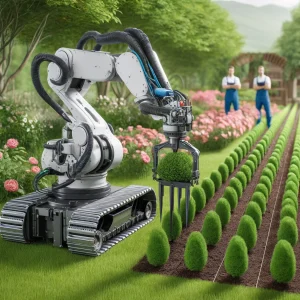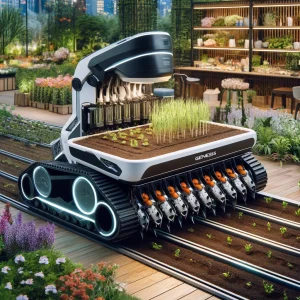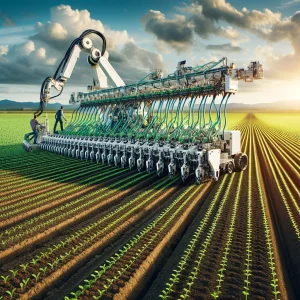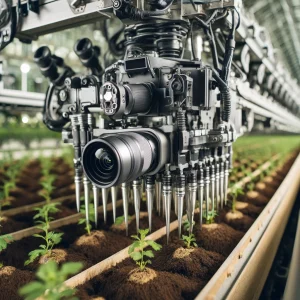In the ever-evolving world of landscaping and gardening, technology continues to push the boundaries of what’s possible. One of the latest advancements is the advent of automated planting machines, which are revolutionizing how we plant rows of shrubbery and flowers with unparalleled precision. These machines are not only enhancing efficiency but also transforming traditional planting methods. This blog delves into the technology behind these machines, their benefits, real-world applications, potential drawbacks, and cost-effectiveness, specifically targeting professional landscapers and home gardeners.

The Technology Behind Automated Planting Machines
Automated planting machines utilize a combination of robotics, GPS, and advanced software to plant seeds, bulbs, and young plants with incredible accuracy. These machines are equipped with sensors and cameras that ensure each plant is placed at the optimal depth and spacing, maximizing growth potential and minimizing human error.
One prime example is the FarmBot Genesis, an open-source CNC farming machine designed for small-scale gardens. It operates on a track system, allowing precise planting, watering, and soil monitoring. For larger commercial applications, the Agrobot is noteworthy. This machine is designed for planting in large fields and is equipped with robotic arms that can grow seedlings at an impressive rate.

Benefits of Automated Planting Machines
The primary benefit of automated planting machines is precision. They ensure each plant is placed at the correct depth and spacing, which is crucial for optimal growth and health. This level of accuracy is difficult to achieve consistently with manual planting.
Additionally, these machines significantly reduce the time and labour required for planting. Tasks typically take days or weeks and can be completed in a fraction of the time, allowing landscapers and gardeners to focus on other aspects of their work. Automated machines also help reduce physical strain and the risk of injuries associated with repetitive planting tasks.

Real-World Applications
Automated planting machines are used in various settings, from large agricultural fields to small urban gardens. In commercial agriculture, machines like the PlantTape system are transforming crop planting. The PlantTape system can plant up to 800 plants per minute, making it ideal for large-scale operations.
Machines like the HexaBot are gaining popularity in urban settings. HexaBot is designed for urban gardens and small farms, offering a compact solution for precise planting in confined spaces. These machines are efficient and sustainable, often using renewable energy sources like solar power.

Potential Drawbacks and Limitations
While the benefits are clear, automated planting machines have One significant limitation: the initial cost. High-quality automated planting machines can be expensive, which might be a barrier for small-scale gardeners or landscapers with limited budgets.
Maintenance is another consideration. These machines require regular maintenance to ensure they operate correctly, which can be time-consuming and costly. There’s also a learning curve associated with using the technology. Landscapers and gardeners must be trained to operate these machines effectively, which can initially slow down adoption.
Environmental impact is another aspect to consider. While many machines are designed to be environmentally friendly, their production and disposal can have an ecological footprint. Considering the switch to automated planting, it’s essential to weigh these factors.

Cost-Effectiveness of Automated Planting Machines
Despite the initial investment, automated planting machines can be cost-effective in the long run. The time and labour savings alone can justify the cost for many professional landscapers and larger gardening operations. By reducing the manual labour needed, these machines can lower overall labour costs and increase productivity.
For example, the Agrobot system, while expensive upfront, can reduce labour costs by up to 70% over its lifetime. Precision planting reduces waste and increases crop yields, leading to higher profitability.
Automated planting machines represent a significant advancement in landscaping and gardening technology. These machines are poised to become indispensable tools for professional landscapers and home gardeners by offering precision, efficiency, and long-term cost savings. While there are some drawbacks, the benefits often outweigh the limitations, making these machines a worthy investment for those looking to modernize their planting processes.
As technology advances, we can expect even more sophisticated automated planting solutions to emerge, further enhancing how we plant and grow our gardens and landscapes. Whether you’re a professional landscaper looking to improve your operations or a home gardener seeking to make your planting process more efficient, automated planting machines offer a glimpse into the future of gardening and landscaping.